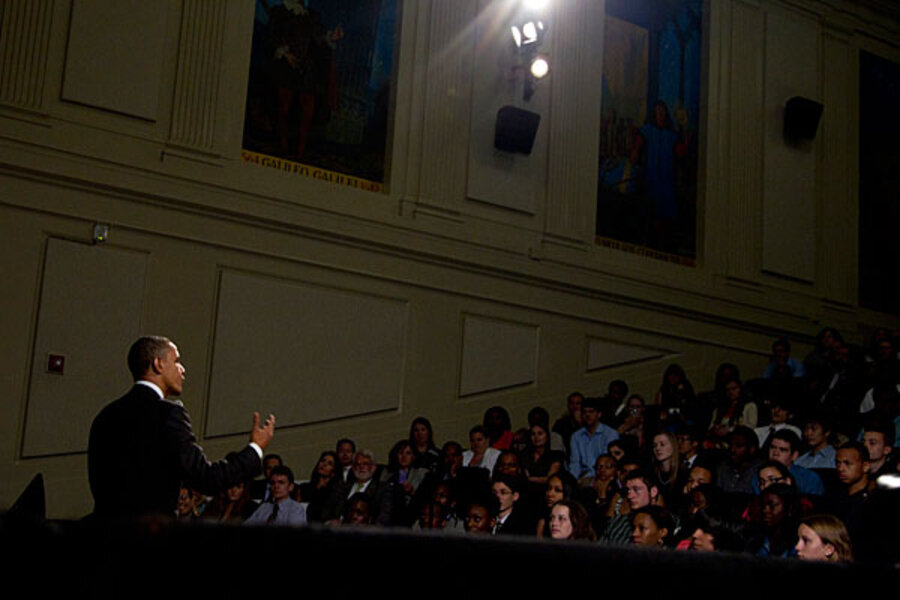Obama turns to 'master teachers' to improve US math scores
Loading...
To ratchet up math and science achievement in American schools, President Obama announced Wednesday a plan to create a Science, Technology, Engineering, and Math (STEM) Master Teacher Corps.
The $1 billion plan is dependent on Congress approving the president’s budget plan. While the investment would be significant, improving science and math teaching has been a longstanding challenge, and the plan is not a silver bullet, education experts say.
Initially, 50 master teachers would mentor fellow teachers in 50 sites around the country. Over four years, the corps would expand to 10,000 teachers who earn up to $20,000 on top of their base annual salary in exchange for their expertise and leadership.
“Symbolically it’s very meaningful,” says Elena Silva, a senior associate in the Washington office of the Carnegie Foundation for the Advancement of Teaching. “Whether we look back 10 years from now and say this really made the difference, our kids are performing better, it’s difficult to say.”
That’s partly because research into what kinds of supports most improve teaching is still under way.
With about two-thirds of 8th graders below proficiency in math and science on the National Assessment of Educational Progress, and many students dropping out of community colleges because they can’t get past remedial math courses, there’s no lack of consensus about the need to boost such skills.
The President’s Council of Advisors on Science and Technology proposed a STEM master teacher corps in a 2010 report. It noted that out of about 477,000 math and science teachers in K-12 schools, roughly 25,000 leave the profession each year.
There are some promising examples of increasing salaries in hard-to-staff subjects and offering new teachers intensive mentoring from experienced teachers.
Math for America, for instance, provides salary supplements to top math teachers in New York Public Schools and has them serve as leaders and mentors. The money isn’t the only motivator, the PCAST report notes. Their commitment to the job increases because of the professional satisfaction and recognition that comes from their role as master teachers.
Merit pay is controversial among teachers, but the aspect of it that has seen the biggest jump in teacher support in the past five years has been the idea of giving teachers more money for teaching in hard-to-staff subjects such as science and math, Ms. Silva says.
The selection criteria for the Master Teacher Corps will be key, says Thomas Kane, professor of education and economics at the Harvard Graduate School of Education. “We need to be sure that we’re identifying the master teachers on the basis of demonstrable results rather than experience or credentials.”
Where available, student-achievement gains should be taken into consideration, Professor Kane says.
The administration says the corps would be selected through a competitive process based on national benchmarks and criteria such as: demonstrated effectiveness in teaching one or more STEM subjects, content knowledge, and contributions to the improvement of teaching and learning.
Master Teacher Corps members would not only assist newer teachers in their own schools, but also would serve as a national resource to boost practices in the teaching of STEM subjects.
The administration also announced Wednesday that $100 million is available immediately – through the existing Teacher Incentive Fund – for school districts to apply for support to develop highly effective STEM teachers.
Both steps are part of a broader administration goal of preparing 100,000 additional STEM teachers over the next decade – partly by enlisting support from the business and philanthropic communities.
“Republicans share the president’s goal of getting better teachers in the classroom,” Alexandra Sollberger, spokeswoman for Rep. John Kline (R) of Minnesota, chairman of the House Education and the Workforce Committee, told the Associated Press. However, she also noted that the federal government currently has more than 80 teacher-quality programs, some of which may be duplicative, so there has to be attention to “efficient use of taxpayer resources.”







